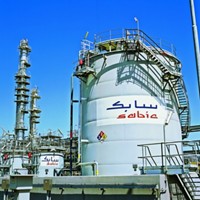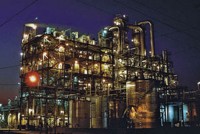Advertisement
Grab your lab coat. Let's get started
Welcome!
Welcome!
Create an account below to get 6 C&EN articles per month, receive newsletters and more - all free.
It seems this is your first time logging in online. Please enter the following information to continue.
As an ACS member you automatically get access to this site. All we need is few more details to create your reading experience.
Not you? Sign in with a different account.
Not you? Sign in with a different account.
ERROR 1
ERROR 1
ERROR 2
ERROR 2
ERROR 2
ERROR 2
ERROR 2
Password and Confirm password must match.
If you have an ACS member number, please enter it here so we can link this account to your membership. (optional)
ERROR 2
ACS values your privacy. By submitting your information, you are gaining access to C&EN and subscribing to our weekly newsletter. We use the information you provide to make your reading experience better, and we will never sell your data to third party members.
Business
C&EN’s Global Top 50 Chemical Firms
The 50 largest chemical companies in the world are chugging along, even if the global economy is not
by Alexander H. Tullo
July 30, 2012
| A version of this story appeared in
Volume 90, Issue 31

Despite a lot of economic uncertainty, nearly all the measures of chemical industry performance are on the rise, according to C&EN’s latest survey of the Global Top 50 chemical companies. Sales are up, profits have increased, and profit margins are approaching record levels.
The relative positions of the companies that make the ranking haven’t changed much. Nearly all the names are familiar, and the few shifts are hardly surprising. On the rise are companies from emerging markets and those that have acquired other chemical firms.
The world’s Top 50 chemical companies posted strong growth in 2011, and their combined revenues are approaching the $1 trillion mark. In 2011, the combined sales for the group were $979 billion, a 13.7% increase compared with 2010. This broke the record of $892 billion record set in 2008.
Sales declined for only seven of the 50 firms. Five of these companies—Sumitomo Chemical, Toray Industries, Shin-Etsu Chemical, Asahi Kasei, and DIC—hail from Japan, which suffered an earthquake and tsunami on March 11, 2011. Many Japanese chemical makers had serious outages. At Shin-Etsu, for instance, production was down for months at two of its major facilities.
The two other firms that posted declines were Arkema and Ineos. Arkema sold its vinyl products business to the Klesch Group; Arkema didn’t count those operations in its 2011 results. Ineos contributed its refining unit to a joint venture with PetroChina last July. Although C&EN didn’t count the refining operation as a chemical business, the disposal likely had an effect on how the company accounts for chemical results.
The 48 firms in the survey that reported operating profits posted a combined increase of 13.9% for 2011 to $110 billion. The group’s overall profit margin—profits measured against sales—was 11.5%, the strongest it has been since 1995.
The results expose a contradiction. Economic growth around the world has been disappointing since the Great Recession began in December 2007. However, chemical profitability is near record levels. It is enough to make one wonder what chemical profits would be like if the global economy were humming along at a brisk pace.
Speaking at the IHS Chemical Financial Forum in New York City last month, IHS Chief Economist Nariman Behravesh noted that the global economy hasn’t progressed much beyond fits and starts in recent years. “This is the third year running in which the economy, not just in the U.S. but at the global level, started off not with a bang, but just fairly strongly, and then faltered,” he said.
Behravesh ticked off several economic uncertainties, among them oil prices, the European debt crisis, emerging markets, and U.S. growth.
Oil prices, he observed, are easing and turning out to be a stimulus for the economy. The European crisis, he said, is getting worse, and the region, “for all intents and purposes,” is in a recession. In China, manufacturing growth has been sluggish, but the so-called hard landing that worries many is not likely to materialize. Overall, he rated the likelihood of another recession in the U.S. or globally at one in five.

In recent months, forecasters from chemical industry trade groups have grown more pessimistic. Earlier this month, the American Chemistry Council reduced its forecast for U.S. chemical output growth in 2012 to 0.5% from the 1.2% it predicted late last year. Globally, the group forecasts 2.3% growth. In June, the European Chemical Industry Council reduced its outlook for European chemical growth from 1.5% to zero.
Once again, BASF leads C&EN’s Global Top 50 ranking, with $85.6 billion in chemical revenues. BASF is followed by Dow Chemical and Sinopec. The Chinese petrochemical maker posted a stunning 29.1% increase in sales last year to $57.1 billion. It now trails Dow by only $2.9 billion and could become the second-largest chemical company in the world when C&EN tabulates the ranking again in 2013.
Like Sinopec, large regional chemical makers tended to inch up in the ranking this year. Saudi Basic Industries Corp. (SABIC) posted a sales increase of 23.8%, propelling it from number seven to number five. Brazil’s Braskem, which purchased Dow’s polypropylene unit last September, jumped from number 22 to number 16. India’s Reliance Industries posted a 27.7% gain in revenues but remained at number 20.
Fertilizer makers also climbed in the ranking. Norway’s Yara moved from number 29 to 23 with a 22.9% increase in sales. The U.S. fertilizer maker Mosaic posted an eye-popping 47.0% increase in revenues, catapulting it from number 46 to 36. PotashCorp of Saskatchewan achieved a 33.3% increase in sales and is now number 41, up from 47.

Only four of the firms that appeared last year are not in this year’s Global Top 50 ranking. Royal Dutch Shell no longer breaks out the results of its chemicals business, reporting them instead with other “downstream” operations such as refining. The company was number five last year.
Rhodia, number 44 last year, was purchased by number 31 Solvay for $4.8 billion. This is the biggest impact that mergers and acquisitions had on the Global Top 50 ranking this year. The two other firms that dropped off the list, Dow Corning and Celanese, numbers 49 and 50, respectively, last year, were merely overtaken by faster-growing firms.
Four firms debuted this year. The largest is South Korean petrochemical maker SK Innovation, at number 26. In 2011 the company started to break out all of its chemical results, revealing $13.6 billion in chemical sales. Styrolution, a styrenic polymers joint venture between Ineos and BASF formed late last year, joins the list at number 40 with $9.1 billion in pro forma revenues.
Two other newcomers to the list are Mexico’s Alpek and Eastman Chemical, at numbers 49 and 50, respectively. Alpek grew by acquiring two rivals in polyethylene terephthalate. Eastman also has been acquisitive. Last year, it purchased Sterling Chemicals. This year, it made the much larger $4.7 billion acquisition of Solutia, a move that will be sure to bump it up in the ranking next year.
Blockbuster deals such as the Eastman-Solutia transaction happen only occasionally in the chemical industry, points out Telly Zachariades, a partner with the investment bank The Valence Group, which advised on Solutia’s side of the transaction. These deals are much more common in sectors such as media, technology, and pharmaceuticals, he notes. The mainstays of chemical industry deal-making are purchases by big chemical firms worth $100 million to $500 million.
Larger businesses, Zachariades notes, tend to go to private equity firms. Often this is because they are too big to fit well within any one chemical company. For instance, DuPont’s automotive coatings business, which is up for sale, will likely be sold to a private equity firm because it is several billion dollars in value and because regulatory constraints come in to play in a relatively consolidated subsector.
Overall, Zachariades says the mergers and acquisitions environment has been strong. After a lull from 2008 to 2010 because of the financial crisis, activity picked up in 2011. “We saw a lot of activity in 2011, and we are seeing the same level of intensity in 2012,” he says.
If so, then a few acquisitive companies should be climbing up the ranking in 2013.
To download a PDF of the Global Top 50 or the Spending table, visit http://cenm.ag/global50.





Join the conversation
Contact the reporter
Submit a Letter to the Editor for publication
Engage with us on Twitter